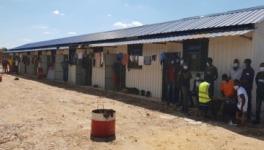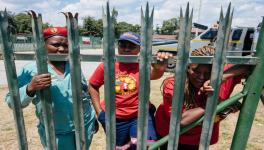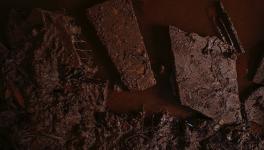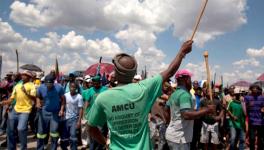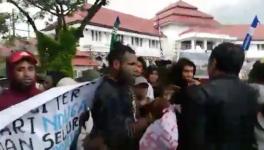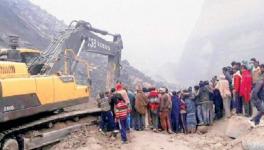Dozens Trapped In The Collapse Of a Makeshift Gold Mine In Indonesia
The mining-induced landslide has become among the largest mining tragedies in Indonesia. (Photo: AP)
On February 26, a landslide caused the sandy walls of an unlicensed gold mine to collapse and trap dozens of workers underneath a thick layer of rubble and mud. The makeshift gold mine is located in the Bolaang Mongondow regency in northeastern Sulawesi, among the easternmost provinces of Indonesia. The estimates of those trapped have varied, in the absence of any records of those working at the mine. It ranged from around 60, according to the Jakarta Postreport, and can reportedly be upto 100 according to the Regent of Bolaang Mongondow. But 38 people are known to be still trapped for sure. The rescue operations have been able to take out 19 workers from the mine, and have reportedly found 8 dead.
The provincial government has stated that as many as 140 members from different agencies are working to help out in the rescue efforts. The rescue operations had to deal with a very difficult terrain, as the ground remains unstable after the landslide. This made the use of any large machinery or automobiles next to impossible, even though the rescuers were able to bring in some today on March 1. According to reports, many among the rescue team have had to manually carry water and supplies to the trapped survivors, while others had to use their bare hands to dig people out.
In a deteriorating rural economy, makeshift mining on the sandy coasts and the steep muddy inlands has become quite common across Indonesia. Since minerals like gold, tin and nickel are present and can be found within 2 to 5 meters of digging in most of the islands, a large number of rural Indonesians have taken to mining to sustain themselves. Hence, building a makeshift mine in the archipelago, unlike elsewhere around the world, does not require the usual sophisticated machinery that is needed for modern mining. This has led to hundreds of thousands of such small-scale mines springing up every year. In the resource rich Bangka Island, off the coast of Sumatra, which has an area of around 12,000 sq.km., estimates state that there are more than 20,000 small illegal mines. Often, entire villages come together to mine their vicinity for sustenance. The illegal gold mine in Sulawesi is also something similar.
Makeshift mining has posed a major threat to several biodiversity hotspots. But more importantly, it has been responsible for a bulk of the mining-related accidents in Indonesia, killing dozens of people every year. Although it is easy to dig through such terrain, it is equally dangerous to work at one of these mining site, since they would often collapse on themselves within few months due to lack of proper structures to prevent that from happening. Villagers keep mining a certain spot until the walls collapse, that often injures many and even kills a few, after which the spot is abandoned for several months or an entire year, only to be mined again later.
Over the past few years, local and national governments have tried to regularise and, if possible, arrest the proliferation of such mines, because of how dangerous they are for the environment, and above all the workers. But most of these efforts have been in vain. In December 2016, a provincial government in Sumatra introduced a scheme to facilitate safer and less hazardous mining options for people, with the creation of ‘People’s Mining Areas’. But it saw very limited success. Such regulatory policies did not catch up elsewhere, since most governments favor complete abolition of small mines altogether. One possible reason for such an attitude could be that they hamper the profits of the larger mining corporations, who have been lobbying for stronger enforcement of existing laws that make setting up of small legal mines prohibitively expensive.
Rural Indonesians who engage in such mining, sometimes with their entire families, do not really earn much from it. But mining remains their only source of income, because of massive job losses caused by the decline in the plantations sector, that used to be among the largest sectors in the country.
The Sulawesi mine collapse is perhaps the single biggest tragedy, in terms of casualties and the number of those who are still trapped, bringing worldwide attention to the dangers informal mining sector.
Get the latest reports & analysis with people's perspective on Protests, movements & deep analytical videos, discussions of the current affairs in your Telegram app. Subscribe to NewsClick's Telegram channel & get Real-Time updates on stories, as they get published on our website.













